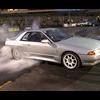Power Fc - Diy
Announcements
-
Similar Content
-
Latest Posts
-
Have you checked the foam over the years? No deterioration to the foam from e85 mixing in oil? (assuming you're on E85)
-
Add to this... What blew the fuse too? If a circuit feeding power to the coils was blown, how were the coils even functioning to let the car start? There is some seriously wrong wiring in that car for certain, and I'm betting there is some melted cables somewhere, but I can't explain the 30v either, unless there is something back feeding on that power line that has a dodgy power system and the electronics are giving it hell.
-
This is typically the case with such threads. What I cannot quite get my head around is where a reading above 12V (or 13.8 or 14.x or whatever the maximum achievable voltage might actually be in that specific car) comes from. 25V or 30V should be completely impossible. There's no way to create it. Hard to answer that question. It will literally depend on whether the current tune relies on the values as set. I'd guess it probably does. ie, the real base pressure being 49 means that the flowrate through the injectors will be higher than if it was 43.5. The Haltech's modelling should be handling that, but because it thinks the pressure is only 43.5, then..... I dunno. It should be thinking that it will be injecting less fuel with each pulse duration than is actually happening. So, something is definitely not-as-it-should-be, but specifically what that is is beyond my abilities to imagine. Someone like Dose who spends more time with Haltechs might have a better thought.
-
Bit of a late reply here as me and my wife have been really busy with new born twins. I finally got these issues fixed and it was something really stupid that caused all of this 🤦♂️... After alot of mucking around with trying to figure out what is causing these issues, I back probed one of the R35 coils on the power 12v supply, with the engine running it got 25v! And I thought, hang on..., this isn't normal. Measured my battery with the engine running to check for over charge from the alternator and it wasn't that. So then I dissconnected the R35 PRP coil harness and backprobed the power supply on the engine loom where the ignition coil harness connects, with the key on ignition (engine off) it measured 30v! So then I had to trace where that high voltage was coming from and it lead me to the brown relay "ECM & IGN coil relay" inside the cabin next to the ECU on the passanger wall. This relay feeds power to the ECM and ignition coils. Tried swapping it with another same relay. nah still 30v.. coming from the 2 green/white wires in the brown relay. So then I set my multi meter to the beep continuity mode and probed every fuse on the fuse box inside the cabin to try and find this high voltage power source. Wasn't any of the fuses inside the cabin. Then probed all the fuses in the engine bay and BAM, got my power source that was a 10AMP fuse called "ENG CONT". Pulled the fuse out, and what do you know... it was blown. 🤦♂️ So then I quickly replaced it with a new 10AMP fuse, started the car and yeah haha [insert extreme face palm]... The RPM blimping thing went away, car idles smoothly now like what it was before. I swear! I checked all my fuses with my test light twice before I created this forum thread. I think, maybe because one side of that faulty 10A fuse lit up on my test light, I must have thought it was still ok and not blown. But now I know to have both sides light up on the test light when checking fuses... I hate diagnosing electricals.... I'd take mechanical problems over electrical problems any day🤣. Drove the car around my suburb with the engine up to operating temp and it runs fine like before. However, I notice that my fuel pressure is still at 49psi. So I'm thinking this must be normal for my system as I've upgraded the stock fuel pump to a Walbro 255L/h with a constant 12v mod. But anyway, I'm just glad to have my daily back on the road! Thanks everyone for the replies on this thread, all sorted now! One thing I want to ask you tuner guys, my base fuel pressure on the haltech main settings are set to 43.5psi from default (my tuner must have not checked the fuel pressure maybe when tuning my car?). Do I set it to what it actually is idling on at 49psi? Or just leave it ("if it aint broke, don't fix it/leave it")?
-









Recommended Posts
Create an account or sign in to comment
You need to be a member in order to leave a comment
Create an account
Sign up for a new account in our community. It's easy!
Register a new accountSign in
Already have an account? Sign in here.
Sign In Now